Static Display
- F-14A Tomcat: “Fast Eagle 102” (See tab “Restoration of Fast Eagle 102” for background and more photos of this historic aircraft) Restored August 2016.

- F-111E Aardvark
- The General Dynamics F-111 Aardvark was a supersonic, medium-range interdictor and tactical attack aircraft that also filled the roles of strategic nuclear bomber, aerial reconnaissance, and electronic-warfare aircraft in its various versions. Developed in the 1960s by General Dynamics, it first entered service in 1967 with the United States Air Force.The F-111 pioneered several technologies for production aircraft, including variable-sweep wings, after-burning turbofan engines, and automated terrain-following radar for low-level, high-speed flight. Its design influenced later variable-sweep wing aircraft, and some of its advanced features have since become commonplace.
- The E-model was first ordered in 1968 and delivered from 1969-71. It achieved initial operational capability in 1969. The variant’s first flight occurred on 20 August 1969. 94 F-111Es were built. Many F-111Es were assigned to the 20th TFW at Upper Heyford, UK until 1991. The avionics were upgraded on some E-models as part of an Avionics Modernization Program. The variant served in 1990-91 during the Gulf War. Some F-111Es received improved TF30-P-109 engines in the early 1990s. All F-111Es were retired to AMARC by 1995.

-
1936-44 Fairey Swordfish A/NA4: British Torpedo bomber, reconnaissance, and anti-submarine aircraft. It was a slow aircraft making it helpless against fighters, but extremely valuable for torpedo attacks and carrier landings. During WW II this model was successful in sinking one battleship and damaging two others in the Battle of Taranto, and, in May 1942, a Swordfish from the Ark Royal scored a stern hit on the might German battleship, Bismarck, causing it to be unable to maneuver; this made possible an intense attack by the Royal Navy over the next thirteen hours, sinking it to the bottom of the sea.
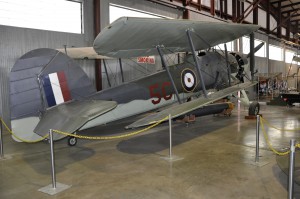
-
1942 Schweizer TG-3A Training Glider: This glider was originally designated SGS 2/12 by the manufacturer. There were 110 manufactured as TG-3A for the USAAF during WW II and less than 30 are still registered in the US. Most were sold to private firms after the war. While wings for gliders used in combat were made of aluminum, training gliders such as this one used wood, saving precious metals for combat. The fuselage skeleton was constructed of welded steel tubing.

- MiG-17
- The Mikoyan-Gurevich MiG-17 is a high-subsonic fighter aircraft produced in the USSR from 1952 and operated by numerous air forces in many variants. It is an advanced development of the very similar appearing MiG-15 of the Korean War. The MiG-17 was license-built in China as the Shenyang J-5 and Poland as the PZL-Mielec Lim-6.MiG-17s first saw combat in 1958 in the Second Taiwan Strait Crisis and later proved to be an effective threat against more modern supersonic fighters of the United States in the Vietnam War. It was also briefly known as the Type 38 by U.S. Air Force designation prior to the development of NATO codes.
- The MiG-17 was the primary interceptor of the fledgling Vietnam People’s Air Force in 1965, responsible for their first aerial victories and seeing extensive service during the Vietnam War. Some North Vietnamese pilots preferred the MiG-17 over the MiG-21 because it was more agile, though not as fast; three of the 16 NVAF Aces of the war (credited with shooting down five or more opposing aircraft) were from MiG-17s.
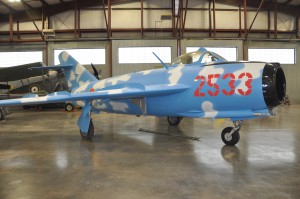
- Republic F-105D Thunderchief: This was the largest single seat, single engine combat aircraft in history at 50,000 lbs; a supersonic all-weather fighter-bomber used by the USAF, capable of achieving speeds of Mach 2. In 1959 it set a world speed record of 1,216.48 mph over a 62 mile circuit. While capable of carrying nuclear weapons, it was the primary vehicle for carrying heavy conventional bomb loads (up to 7 tons) during the early Vietnam War. Of the 833 Thunderchiefs produced, 320 were lost in combat. It is the only aircraft to have been removed from combat due to heavy losses. The early F-105B was plagued with issues, requiring 150 hours of maintenance for each hour of flying. A two seat version (F-105F and G), “Wild Weasel”, was used in suppression of enemy air defenses.
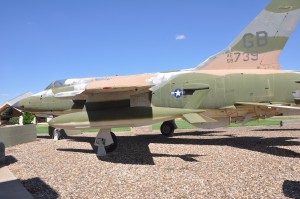
- North American F-100 Super SabreThe F-100 Super Sabre was an American supersonic jet fighter aircraft that served with theUnited States Air Force(USAF) from 1954 to 1971 and with the Air National Guard (ANG) until 1979. The first of the Century Series of USAF jet fighters, it was the first USAF fighter capable of supersonic speed in level flight. The F-100 was designed by North American Aviation as a higher performance follow-on to the F-86 Sabre air superiority fighter.
Adapted as a fighter-bomber, the F-100 was supplanted by the Mach two-class F-105 Thunderchief for strike missions over North Vietnam. The F-100 flew extensively over South Vietnam as the air force’s primary close air support jet until being replaced by the more efficient subsonicLTV A-7 Corsair II. The F-100 also served in other NATO air forces and with other U.S. allies. In its later life, it was often referred to as the Hun, a shortened version of “one hundred”.
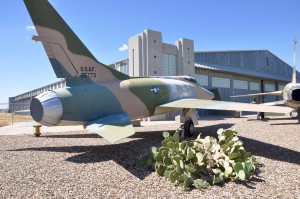
- Bell UH-1H Iroquois: “Huey”The Bell UH-1 Iroquois (nicknamed “Huey“) is a utility military helicopter powered by a single turboshaft engine, with two-blade main and tail rotors. The first member of the prolific Huey family, it was developed by Bell Helicopter to meet a United States Army’s 1952 requirement for a medical evacuation and utility helicopter, and first flew in 1956. The UH-1 was the first turbine-powered helicopter to enter production in 1960 for the United States military and more than 16,000 have been built since.
The Iroquois was originally designated HU-1, hence the Huey nickname, which has remained in common use, despite the official redesignation to UH-1 in 1962. The UH-1 first saw service in combat operations during the Vietnam War, with around 7,000 helicopters deployed.
- The HU-1A (later redesignated UH-1A) first entered service with the 101st Airborne Division at Fort Campbell, Kentucky, the 82nd Airborne Division, and the 57th Medical Detachment. Although intended for evaluation only, the Army quickly pressed the new helicopter into operational service, and Hueys with the 57th Medical Detachment arrived in Vietnam in March 1962. The UH-1 has long been a symbol of US involvement in Southeast Asia in general and Vietnam in particular, and as a result of that conflict, has become one of the world’s most recognized helicopters. In Vietnam primary missions included general support, air assault, cargo transport, aeromedical evacuation, search and rescue, electronic warfare, and later, ground attack. During the conflict, the craft was upgraded, notably to a larger version based on the Model 205. This version was initially designated the UH-1D and flew operationally from 1963
- .
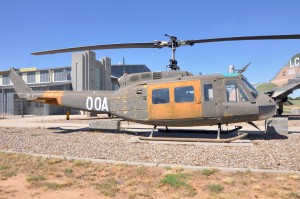
- Bell AH-1S CobraThe Bell AH-1 Cobra is a two-blade, single-engine attack helicopter manufactured by Bell Helicopter. It was developed using the engine, transmission and rotor system of the Bell UH-1 Iroquois. A member of the prolific Huey family, the AH-1 is also referred to as the HueyCobra or Snake.The AH-1 was the backbone of the United States Army’s attack helicopter fleet, but has been replaced by the AH-64 Apache in Army service. Upgraded versions continue to fly with the militaries of several other nations. Surplus AH-1 helicopters have been converted for fighting forest fires.
- AH-1 Cobras were in use by the Army during the Tet offensive in 1968 and through the end of the Vietnam War. Cobras provided fire support for ground forces, escorted transport helicopters and other roles, including aerial rocket artillery (ARA) battalions in the two Airmobile divisions. They also formed “hunter killer” teams by pairing with OH-6A scout helicopters. Bell built 1,116 AH-1Gs for the U.S. Army between 1967 and 1973, and the Cobras chalked up over a million operational hours in Vietnam; the number of Cobras in service peaked at 1,081. Out of nearly 1,110 AH-1s delivered from 1967 to 1973 approximately 300 were lost to combat and accidents during the war.
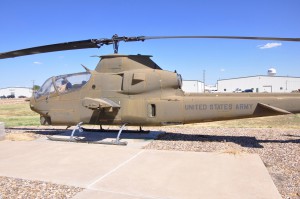
- McDonnell Douglas F-4E Phantom II: This is a tandem two-seat supersonic jet interceptor/fighter-bomber with two engines and long-range capability. It was used by the US Navy, Marine Corps and Air Force, and is the only aircraft used by both the USAF Thunderbirds and the USN Blue Angels demonstration teams. The Phantom served a pivotal role in the war in Vietnam in terms of an air superiority aircraft, and later in ground-attack and aerial reconnaissance roles. It could carry more than 9 tons of weapons and has the distinction of being the last US fighter to attain Ace status in the 20th century.

- Lockheed PV-2D Harpoon: The predecessor to the Harpoon was the Lockheed Ventura, a bomber and patrol aircraft used by US and British Commonwealth forces. The USAAF designated the 200 aircraft they ordered as B-34 Lexington’s. When the US Navy acquired the aircraft in late 1943, it had been updated with an increased wing area, larger fuel tanks, and eight forward-firing machine guns for use in ground attacks. Harpoons were deployed mostly in the Pacific theater, and because they were equipped with radar, were often the lead aircraft in formations of B-24‘s.
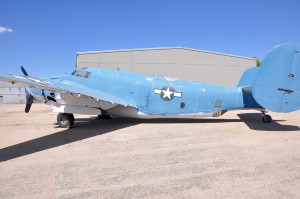
(Much information contained on this page was taken from Wikipedia.)















